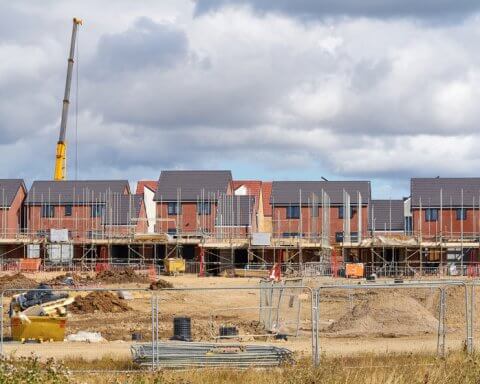This article was originally published on StreetsBlogUSA.
Boris Johnson says that one of his goals as mayor of London was to make cycling “more popular and more normal.” As Johnson’s eight-year tenure winds down, it looks like the progress he made in his second term has accomplished that mission.
If current trends continue, bike commuters will outnumber car commuters in central London by 2018, according to a recent report from Johnson’s office [PDF]. Citywide, Transport for London estimates people already make 645,000 bike trips on an average day.
When Londoners head to the polls later this week to elect their next mayor, five candidates will be on the ballot, all of whom have signaled they will continue to expand the city’s bike network, reports the BBC’s Tom Edwards. Most of them have pledged to triple the amount of protected bike lanes in the city.
You can trace the London cycling boom to several factors, including the introduction of congestion charging under Johnson’s predecessor, Ken Livingstone, in 2003. But the big turning point came during Johnson’s second term, when bike advocates prompted him to get serious about installing protected bike lanes.
In his first term, Johnson championed the construction of “cycle superhighways” on some of the city’s busiest streets. But these routes, which offered little or nothing in the way of physical protection, didn’t live up to their billing. Cyclists were not satisfied with them and staged huge protests calling for safer bike infrastructure. The BBC’s Edwards recalls how cyclists booed Johnson when he was seeking reelection four years ago.
In recent years, Johnson has devoted more resources to protected bike lanes, upgrading the existing “cycle superhighways” and laying out a plan for more. He now says his “single biggest regret” was not doing so sooner.
Johnson has tripled the city’s 10-year budget for cycling, from £273 million to £913 million. The newest “superhighway” was set to open just days ago.
In addition to protected lanes on high-traffic streets, Transport for London is also building out a network of “quietways,” similar to what Americans would call bicycle boulevards — low-traffic streets where car speeds are kept in check and cycling is prioritized.
As more people get on bikes, cycling in London has never been safer. In 2015, nine people were killed while biking in the city. While still too many lives are lost, the fatality rate per bike trip is the lowest on record.
Despite the predictable “bikelash” from some quarters, public opinion is firmly behind the investments in biking. In a recent YouGov poll, 71 percent of London residents said they support the cycle superhighways.
Even the Automobile Association is on board. “Getting more people on bikes, getting more dedicated cycle lanes is better for everyone,” Edmund King, the president of the AA, said in March.
Whoever wins this week’s election, the next mayor seems very unlikely to change course. “Cycling is now a mainstream policy in London politics,” wrote the BBC’s Edwards. “That is quite a story.”





